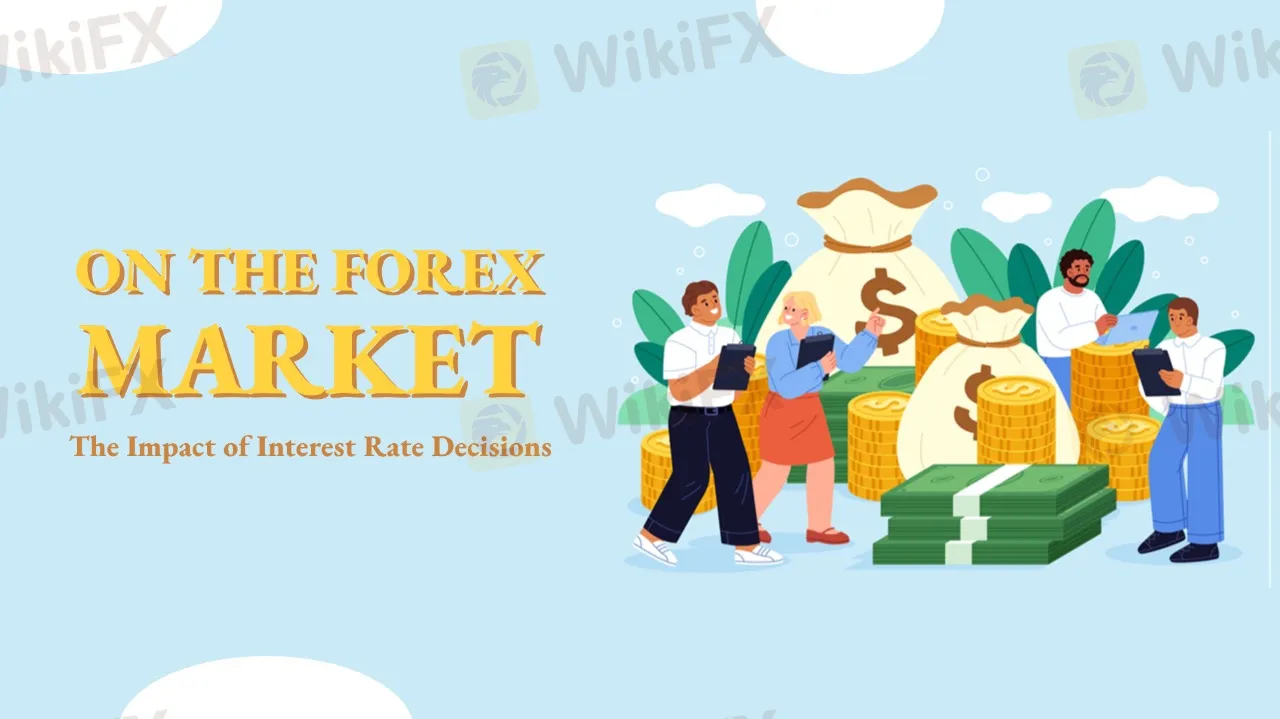简体中文
繁體中文
English
Pусский
日本語
ภาษาไทย
Tiếng Việt
Bahasa Indonesia
Español
हिन्दी
Filippiiniläinen
Français
Deutsch
Português
Türkçe
한국어
العربية
The Impact of Interest Rate Decisions on the Forex Market
Abstract:Interest rate changes determine currency attractiveness, influencing capital flows and exchange rate trends. Understanding this mechanism helps investors navigate the forex market effectively.

Interest rates are a key indicator of capital costs, affecting borrowing expenses and savings returns. In the forex market, investors seek higher yields, meaning capital often flows to countries with higher interest rates. For instance, in the early 2000s, Australia maintained high interest rates, making the Australian dollar a preferred currency for forex traders. Conversely, low interest rates usually lead to capital outflows, putting pressure on the currency. A notable example is the U.S. Federal Reserve lowering rates to near zero in 2020, causing the U.S. dollar to weaken.
How Do Interest Rates Influence the Market?
Interest rate decisions impact both short-term exchange rate fluctuations and long-term market trends.
Rate hikes increase borrowing costs, encourage saving, and attract foreign investment. For example, the Federal Reserves consecutive rate hikes in 2022 strengthened the U.S. dollar against major currencies like the euro and the yen.
Rate cuts lower investment returns and can lead to currency depreciation. In 2014, the European Central Bank introduced negative interest rates, causing the euro to weaken.
Market expectations play a crucial role. Even if a central bank does not change interest rates, expectations of future hikes can drive a currencys value higher. In 2023, the Bank of England hinted at possible rate hikes, leading to an appreciation of the British pound.
How Should Investors Respond?
Investors should monitor key central bank policies, such as those of the Federal Reserve, European Central Bank, and Bank of Japan, while also considering other factors like inflation and GDP growth.
Carry trade opportunities: Investors can hold positions in high-interest-rate currencies, such as going long on AUD/JPY, to earn interest rate differentials.
Tracking the bond market: The yield curve can provide insights into future interest rate trends. For instance, rising U.S. 10-year Treasury yields often indicate a strengthening U.S. dollar.
Adjusting strategies dynamically: If the market expects rate cuts, investors may shift towards safe-haven assets like gold or the Swiss franc to mitigate risks.
Interest rate decisions are a fundamental driver of the forex market. Investors need to analyze policies, market sentiment, and economic data holistically to seize trading opportunities amid market fluctuations.

Disclaimer:
The views in this article only represent the author's personal views, and do not constitute investment advice on this platform. This platform does not guarantee the accuracy, completeness and timeliness of the information in the article, and will not be liable for any loss caused by the use of or reliance on the information in the article.
Read more

Risk Involved with Cabana Capital – Every Trader Should Know
Cabana Capital has changed its name and logo, basically everything about its identity. This seems a bit suspicious, and it's something you should definitely be concerned about. In this article, you’ll learn about the red flags that every trader needs to watch out for.

CME International Records a Massive Jump in Forex Volumes
CME International recorded a record surge in its foreign exchange trading volumes during the second quarter. Check out its performance across products and markets.

Scam Brokers Exposed! FCA Warns Traders to Stay Safe
If you are into forex trading, you need to protect your money from investment scams. Many scam brokers are active in the market now. The FCA, a reputed financial regulator, has issued a list of unlicensed brokers you need to stay away from.

New to Forex Trading in India? Here's How You Can Start and Maximize
Want to begin your forex trading journey in India? Here's a guide that will help you open and close trading positions effectively, resulting in enhanced returns and minimized risks.
WikiFX Broker
Latest News
What is a Pip in Forex?
New to Forex Trading in India? Here's How You Can Start and Maximize
FXTRADING.com: A Closer Look at Its Licenses
xChief: A Closer Look at Its Licenses
Intel spins out AI robotics company RealSense with $50 million raise
Risk Involved with Cabana Capital – Every Trader Should Know
Tom Lee's Granny Shots ETF is crushing the market and raking in cash
XTB Hack 2025: Major Security Breach Exposes Client Accounts
Nvidia's Jensen Huang sells more than $36 million in stock, catching up with Warren Buffett in net worth
These are America's 10 weakest state economies most at risk in a recession
Currency Calculator


